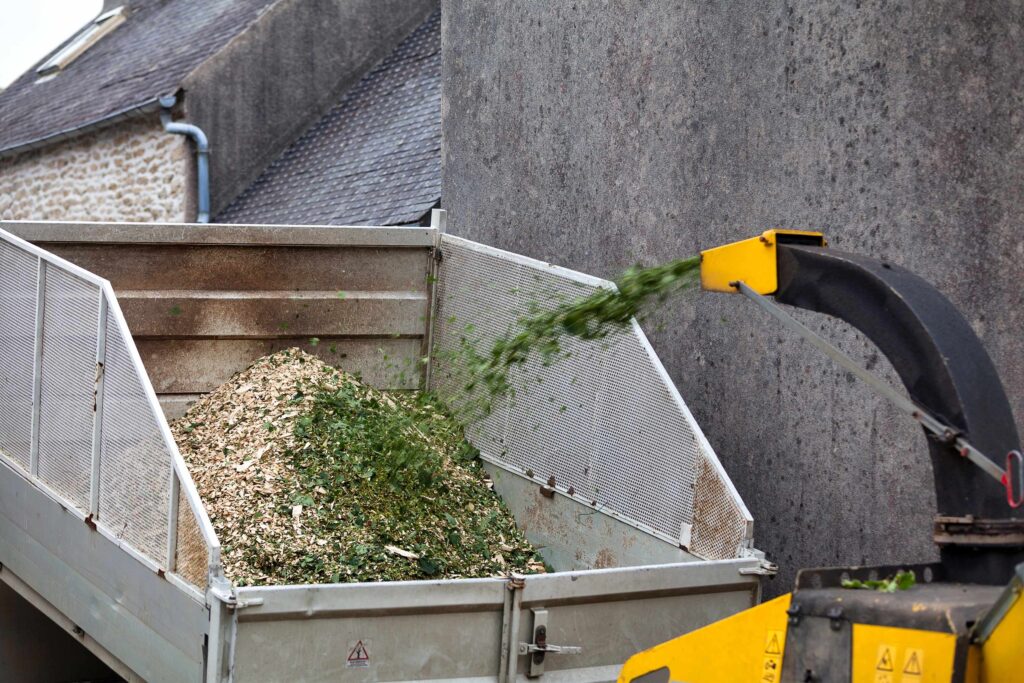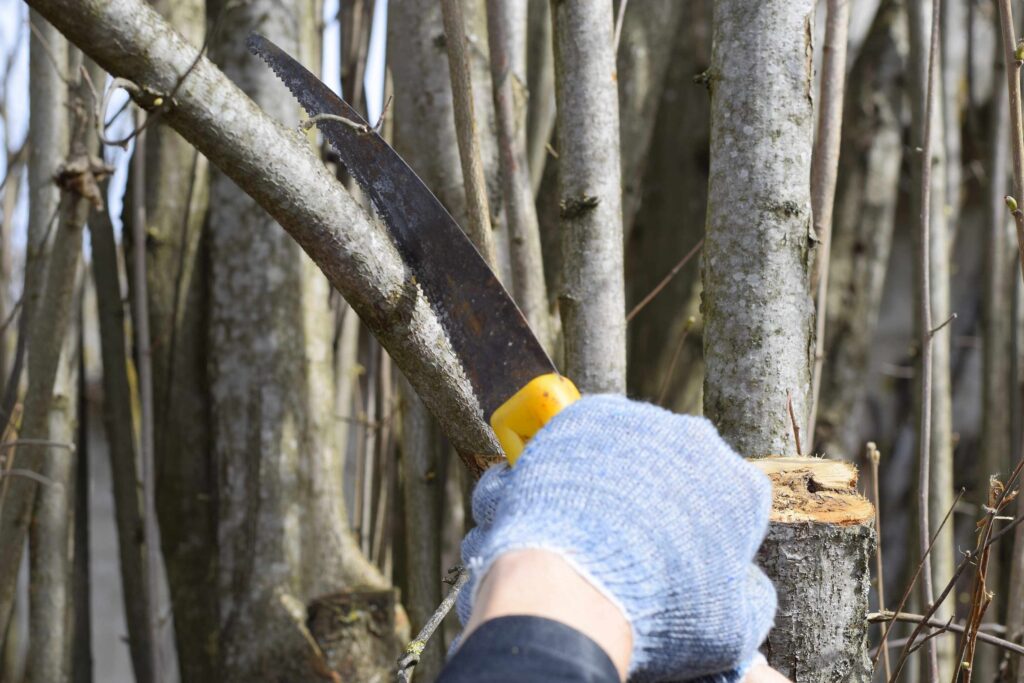Trees play a crucial role in maintaining the health and beauty of our environment. However, just like any other living organism, trees require proper care and maintenance to thrive. One of the key aspects of tree care is tree pruning. Tree pruning services are essential for promoting the overall health and longevity of trees. In this article, we will delve into the importance of tree pruning and why it is necessary to hire professional services for this task.
Understanding the Basics of Tree Pruning
Before we explore the benefits of tree pruning services, let’s first understand the basics of tree pruning. Tree pruning involves the selective removal of certain branches or parts of a tree. This process is carried out for various reasons, including aesthetic purposes, safety concerns, and promoting tree health.
The Science Behind Tree Pruning
Tree pruning is not just a random act of cutting branches. It is rooted in scientific knowledge and expertise. Professional tree pruning services are equipped with a deep understanding of tree biology and growth patterns. By carefully evaluating a tree’s structure and health, professional arborist can determine the most optimal pruning techniques to follow.
When it comes to tree biology, there are several key factors that arborists take into consideration. They consider the tree’s growth habit, which can vary from species to species. Some trees have a more upright growth habit, while others have a spreading or weeping habit. Understanding these growth habits helps arborists determine how to prune the tree to maintain its natural shape and structure.
In addition to growth habits, arborists also consider the tree’s growth rate. Some trees grow rapidly, while others have a slower growth rate. This knowledge helps arborists determine the frequency of pruning required to keep the tree in optimal health. Pruning too frequently can hinder a tree’s growth, while pruning too infrequently can lead to overgrowth and potential safety hazards.

Common Tree Pruning Techniques
There are several common tree pruning techniques employed by professionals. Some of these techniques include:
- Thinning: This technique involves removing selective branches to improve airflow and reduce the density of the tree canopy. It allows more sunlight to reach the inner branches, promoting overall tree health.
- Raising: Raising the lower branches of a tree helps create clearance for pedestrians, vehicles, and structures. It is especially important in urban areas where space is limited.
- Reduction: This technique reduces the overall size of the tree by selectively removing branches. It is often employed to prevent trees from encroaching on structures or powerlines. Arborists carefully assess the tree’s growth pattern to determine which branches to remove, ensuring the tree’s structural integrity.
- Deadwooding: Deadwooding involves the removal of dead or dying branches. This improves the tree’s appearance and prevents potential hazards. Dead branches can become weak and brittle, posing a risk of falling and causing damage or injury.
- Directional Pruning: This technique is used to direct the growth of a tree by selectively pruning branches to guide its shape. Arborists carefully consider the tree’s natural form and growth habit to create a desired shape or structure.
Each of these pruning techniques requires skill and precision. Arborists undergo extensive training to develop their expertise in tree pruning. They understand the importance of making clean cuts to promote proper healing and minimize the risk of disease or pest infestation.
By employing these pruning techniques, professional tree pruning services can help enhance the beauty, safety, and overall health of your trees. Regular pruning can also extend the lifespan of your trees, ensuring they thrive for years to come.
The Role of Tree Pruning in Tree Health
Now that we have familiarized ourselves with the basics, let’s explore how tree pruning directly impacts tree health.
Tree pruning is not just about aesthetics; it plays a crucial role in maintaining the overall health and vitality of trees. Beyond the immediate visual benefits, such as a well-groomed appearance, proper pruning can significantly impact the tree’s ability to thrive in its environment.
Preventing Disease and Pest Infestation
Regular tree pruning helps prevent the spread of diseases and pest infestations. By removing diseased or infested branches, arborists can halt the progress of pathogens and pests, safeguarding the overall health of the tree.
Furthermore, pruning promotes air circulation and sunlight exposure within the tree’s canopy, creating an environment that is less favorable for disease-causing organisms. Adequate airflow can help dry out excess moisture, reducing the risk of fungal infections and other common tree ailments.

Promoting Growth and Longevity
Proper pruning techniques stimulate tree growth by redirecting nutrients to the remaining branches. Additionally, removing weak or overcrowded branches allows the tree to allocate resources more efficiently, prolonging its lifespan.
Moreover, strategic pruning can shape the tree’s structure to improve its overall strength and resilience against harsh weather conditions. By reducing the risk of branch breakage during storms, trees are better equipped to withstand environmental challenges and continue to thrive for years to come.
The Environmental Impact of Tree Pruning
Tree pruning goes beyond the benefits it provides to individual trees; it also has a positive impact on the environment at large.
Tree pruning is a crucial aspect of arboriculture that not only promotes the health and longevity of trees but also enhances their environmental contributions. By maintaining trees through proper pruning practices, arborists can help trees thrive and continue to provide essential ecosystem services.
Enhancing the Tree’s Environmental Contributions
Healthy and well-maintained trees contribute significantly to the environment. They absorb carbon dioxide, release oxygen, provide shade, mitigate urban heat island effects, and improve air quality. Regular pruning ensures that trees can continue to offer these essential environmental services.
Furthermore, pruning can promote biodiversity by allowing more sunlight to reach the forest floor, encouraging the growth of understory plants and providing habitats for various wildlife species. This increased biodiversity can have far-reaching positive impacts on the overall health and resilience of the ecosystem.
Also Read:
- Palm Tree Pruning: Special Considerations and Care
- Why Tree Pruning Services are Essential for Healthy Trees
- The Essential Guide to Tree Cutting and Removal Services Near Me
- How to Select the Best Tree Removal Company for Your Sydney Property
- Experience the Beauty of Handcrafted Bouquets with Flower Delivery in Neutral Bay
Mitigating Risks to Surrounding Ecosystem
When trees grow unchecked, they can pose risks to the surrounding ecosystem. Overgrown branches may fall during storms, damaging property or causing injury. Pruning services reduce these risks by removing weakened or potentially hazardous tree parts.
Additionally, proper tree pruning can help prevent the spread of diseases and pests within tree populations, safeguarding the overall health of the forest or urban green spaces. By addressing potential issues proactively through pruning, arborists can mitigate environmental disturbances and maintain the balance of the ecosystem.
When and How Often to Prune Trees
The timing and frequency of tree pruning vary depending on various factors.
Tree pruning is not only essential for maintaining the health and aesthetics of your trees but also plays a crucial role in promoting proper growth and structural integrity. By strategically removing dead or diseased branches, you can improve air circulation within the canopy, allowing sunlight to reach the inner branches and fostering new growth.
Seasonal Considerations for Tree Pruning
In general, tree pruning is best carried out during the dormant seasons, such as winter or early spring. Pruning during these periods minimizes stress on the tree and reduces the risk of disease transmission. Additionally, pruning during the dormant season helps to avoid interfering with the tree’s active growth phases, ensuring minimal disruption to its natural processes.
During the summer months, it is advisable to refrain from extensive pruning, as the tree is actively growing and may struggle to recover from the stress of pruning. However, light pruning to remove dead or damaged branches can still be performed if necessary to maintain the tree’s health and appearance.
Frequency and Timing for Optimal Tree Health
The frequency of tree pruning depends on the species, age, and overall condition of the tree. On average, most trees benefit from pruning every three to five years. However, certain fast-growing species or trees in poor health may require more frequent pruning to manage their growth and prevent structural issues.
Regular inspections of your trees by arborists or tree care professionals can help determine the optimal timing and frequency of pruning for each specific tree on your property. These experts can identify potential hazards, assess the tree’s overall health, and recommend tailored pruning techniques to promote long-term vitality and beauty.

Choosing the Right Tree Pruning Services
When it comes to tree pruning, it is essential to hire a reliable and experienced tree pruning service. But with so many options out there, how do you choose the right one? Let’s delve deeper into the qualities you should look for in a tree pruning service to make an informed decision.
Qualities of a Reliable Tree Pruning Service
When selecting a tree pruning service, consider the following qualities:
- Experience: Look for a service provider with a proven track record and extensive experience in the field. An experienced team will have the knowledge and skills to handle any pruning job efficiently and effectively.
- Certifications: Ensure that they have certified arborists who adhere to industry standards. Certified arborists have undergone rigorous training and have a deep understanding of tree biology, pruning techniques, and safety protocols.
- Insurance: Verify that the service provider carries liability insurance to protect against any potential damages. Accidents can happen, and having insurance coverage ensures that you won’t be held liable for any mishaps during the pruning process.
- References: Check for testimonials and references from satisfied customers. Positive feedback from previous clients is a good indicator of the quality of service you can expect.
The Cost-Benefit Analysis of Professional Pruning
While professional tree pruning services may come at a cost, the long-term benefits outweigh the initial investment. Proper pruning techniques performed by experts ensure the health, safety, and aesthetics of your trees, prolonging their lifespan and enhancing the overall value of your property.
By removing dead or diseased branches, pruning promotes healthy growth and reduces the risk of tree failure during storms. It also improves air circulation and sunlight penetration, which are crucial for the well-being of your trees. Additionally, professional pruning enhances the visual appeal of your landscape, making your property more attractive and inviting.
Moreover, tree pruning is not just about the individual tree’s well-being but also about the environment as a whole. Pruning helps maintain a balanced ecosystem by allowing other plants and organisms to thrive. It also reduces the chances of tree-related accidents, protecting both people and property from potential hazards.
In conclusion, tree pruning services are essential for maintaining healthy trees. Pruning not only promotes tree health but also benefits the environment and reduces potential hazards. By understanding the basics of tree pruning, considering the timing and frequency, and selecting the right professionals for the job, you can ensure the optimal health and longevity of your trees. So, don’t neglect the importance of tree pruning services and invest in the well-being of your trees and the environment.
